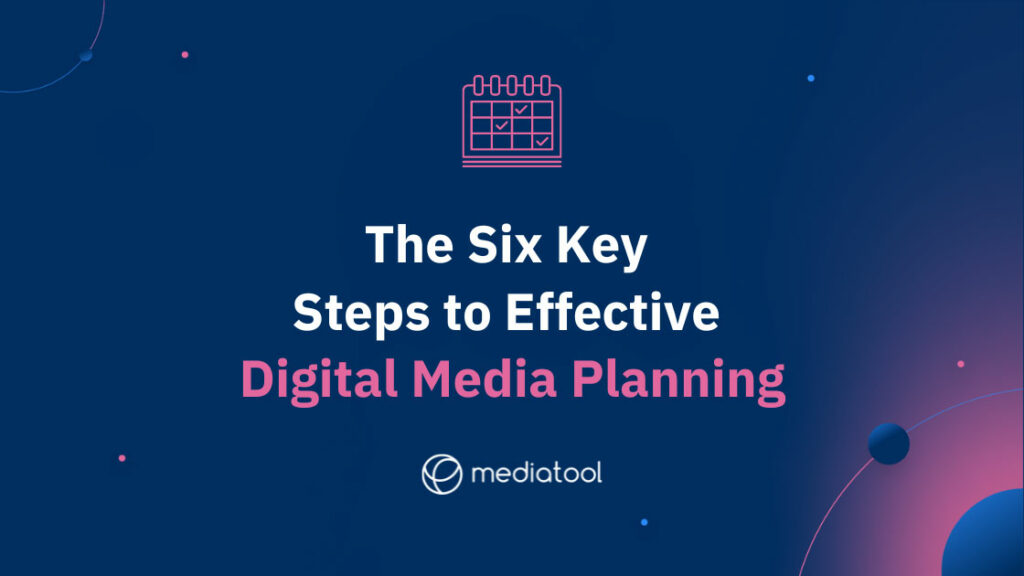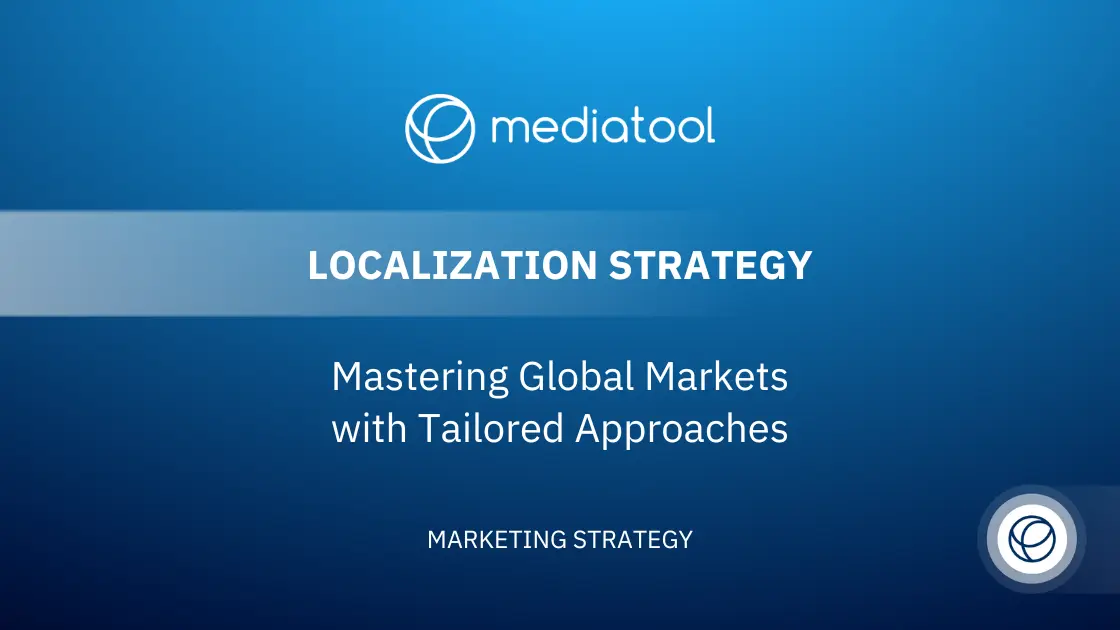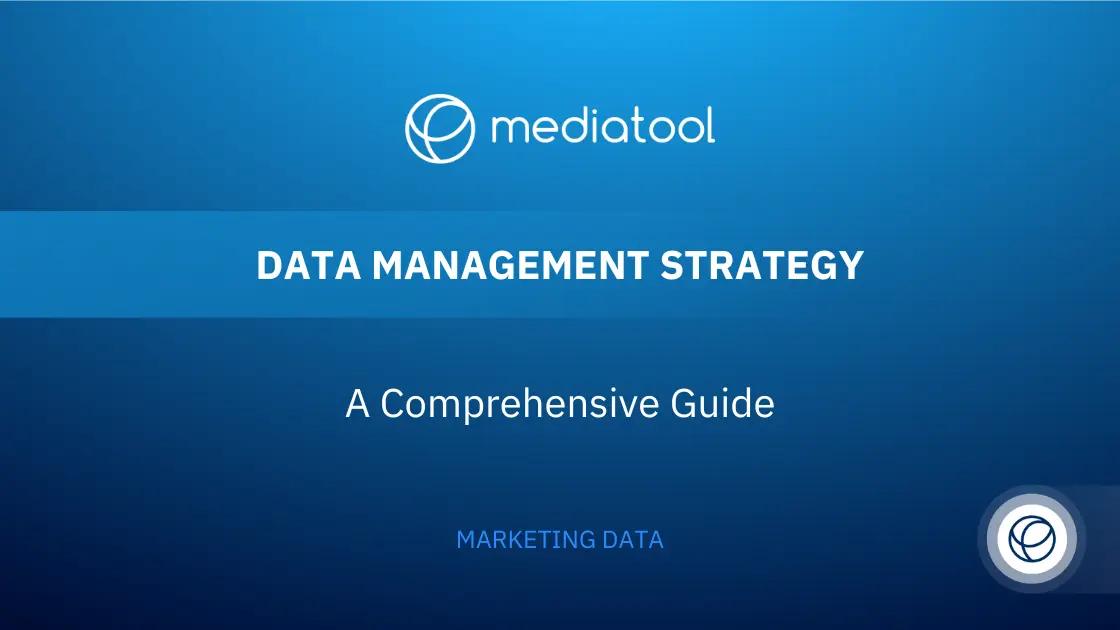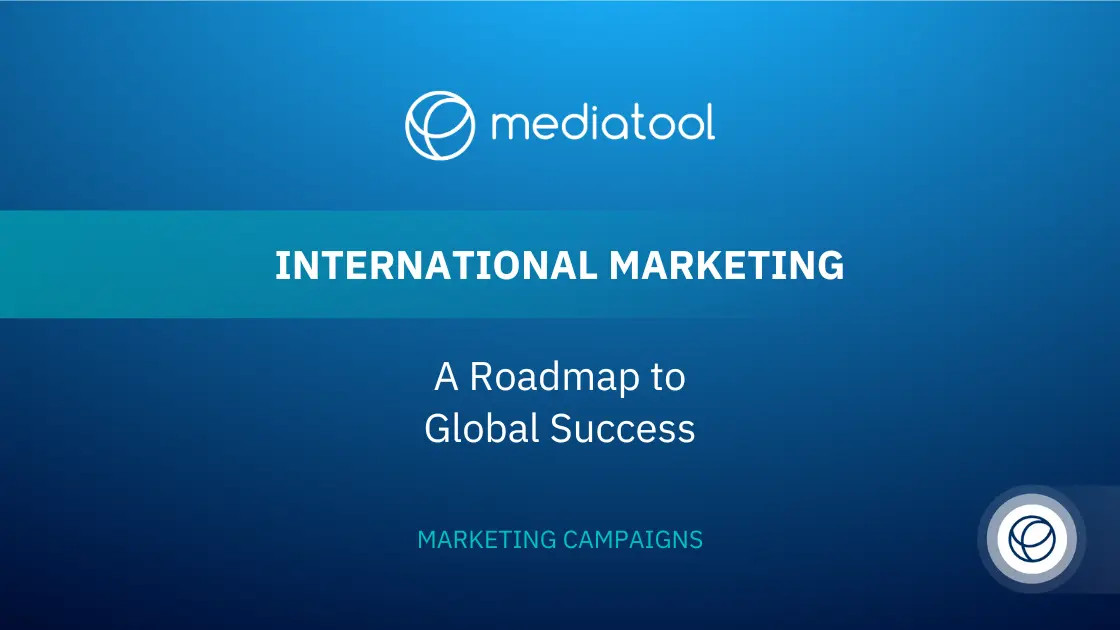How to build an effective digital media plan that achieves your marketing objectives and maximizes ROI while staying within budget.
Adapting to the new advertising climate is crucial in the new normal. Optimizing your digital media planning to reflect consumers’ fast-evolving needs is likely on every marketing leader’s agenda.
If you’re looking for ways to optimize team performance to reach advertising objectives whilst saving time and money, you’re in the right place. Keep reading to learn the key steps to effective media planning that will maximize your return on media investment (ROMI) and help you to achieve your marketing goals.
But first…
What is a Digital Media Plan?
A digital media plan is a strategic blueprint that guides the deployment of digital advertising campaigns across various digital media channels. It’s an integral part of a comprehensive media planning process, meticulously crafted by media planners and digital media planners alike. This plan outlines how to effectively reach your target audience, utilizing a mix of paid media, online advertising, and engaging content spread across chosen digital channels.
In essence, a digital media plan serves as a comprehensive guide that aligns digital advertising efforts with the overall advertising strategy. It helps businesses navigate the complex landscape of the digital world, ensuring that marketing campaigns reach their intended audience with maximum efficiency and impact.
1. Define your target audience and their pain points
Understanding Customer Needs and Loyalty
In the realm of digital media planning, the focus has shifted significantly towards creating positive customer experiences. The era where customer loyalty was solely dependent on price or product quality is over. Today, loyalty hinges on the experiences customers receive from brands. For media planners and digital media strategists, this means prioritizing an understanding of the target audience’s needs and pain points. Failing to align with these evolving needs can result in losing valuable customer engagement and loyalty.
Profiling the Target Audience
A key aspect of effective media planning is the careful profiling of the target audience. This involves detailed audience research to understand demographic factors such as age, occupation, location, and interests. Such a detailed understanding is crucial for crafting a digital media plan that resonates with the intended audience. By identifying specific characteristics and preferences of your target customers, you can select the most appropriate media channels and digital platforms for disseminating your message. This targeted approach ensures that your marketing campaigns are not just broad strokes but are tailored to engage and convert your specific audience segments.
By continuously monitoring these efforts and adapting to the latest media trends, digital media planners and media buyers can refine their strategies to ensure that each advertising campaign not only reaches but resonates with the target audiences, thereby increasing brand awareness and fostering customer engagement.
2. Determine your media planning objectives
Adapting to Evolving Consumer Needs
In the dynamic landscape of digital media planning, it’s essential to align your media planning strategy with the shifting needs and preferences of consumers, especially in the post-pandemic era. Setting clear objectives for your media plan is pivotal. These objectives should reflect a keen understanding of the latest media trends and changes in audience behavior, ensuring that your marketing campaigns are both relevant and effective.
Key Objectives: Reach, Frequency, and Cost
Reach:
A core objective in media planning is to determine the reach of your advertising campaigns. Reach refers to the number of people exposed to your ad over a specified period. For instance, when placing ads on digital platforms or traditional media, understanding the potential reach based on metrics like website traffic and audience research is crucial. This helps media planners and media buyers to select platforms that will effectively disseminate their message to the intended audience.
Frequency:
Another important consideration is the frequency of ad exposure. It’s about finding the sweet spot between achieving maximum visibility and avoiding ad fatigue. Effective frequency management ensures that your brand stays top of mind for your target audiences without overwhelming them. This balance is key to creating positive customer engagement and building brand awareness.
Cost:
Understanding the cost of media, such as cost per thousand (CPM) or cost per person (CPP), is vital for budgeting and optimizing ad spend. This information guides media buyers in choosing the most cost-effective media types and platforms for their digital advertising campaigns.
Integrating and Monitoring Campaign Performance
In your media planning process, always check the ideal ad frequency for each channel and remember to integrate data from both online and offline channels. This holistic approach allows for a comprehensive view of how different segments of your audience interact with your campaign. Continuously monitor key performance indicators (KPIs) like ad placement effectiveness, campaign results, and website traffic. This monitoring is essential for refining your media strategy, ensuring that your advertising campaigns are optimized for performance and aligned with your marketing objectives.
3. Create your perfect media mix
Selecting the Right Channels
In the digital media planning process, a crucial step is selecting the right mix of media channels to effectively communicate your message. With a comprehensive understanding of your target audience and clearly defined campaign goals, you can now determine the most effective channels for your message. It’s essential to recognize that while numerous digital media platforms and traditional media options are available, it’s not necessary to utilize all of them. Instead, focus on those channels that best align with your audience’s preferences and behavior.
Utilizing Marketing Optimization Tools
Leverage marketing optimization tools, like Mediatool, to assist in crafting your media mix. These tools offer invaluable insights through customized dashboards and reports, enabling you to analyze your data and media spend effectively. By comparing business data with media planning metrics, you can identify which channels are delivering the highest return on media investment (ROMI). This insight is crucial for refining your media buying strategies and ensuring your ad spend is allocated to the most effective channels.
Developing an effective media plan involves careful selection of digital media channels, strategic use of media planning tools, and continuous monitoring to optimize performance. By focusing on these elements, you can create a media mix that resonates with your ideal customer, drives your marketing objectives forward, and maximizes the impact of your digital advertising efforts.
4. Invest in technology that takes your campaigns to the next level
Embracing Digital Media Planning Software
In the realm of digital media planning, the use of sophisticated management software like Mediatool is crucial for elevating your campaigns. Such technology is instrumental in providing detailed data insights, which are essential for identifying areas to optimize your media plan. Brands and agencies often face challenges with fragmented data, especially in orchestrating omni-channel advertising campaigns. Mediatool is designed to address this issue by offering a comprehensive view of your advertising strategies, integrating various aspects such as ad performance, media buying, and audience targeting.
Overcoming Data Silos with Integrated Solutions
The key to successful digital advertising lies in overcoming the barriers of siloed data. Mediatool provides a unified solution, allowing for seamless integration of data across different teams and channels. This integration is vital for creating an effective media strategy that encompasses all facets of digital media channels, from social platforms to traditional media. By having a unified view, media planners and digital media planners can ensure that their marketing campaigns are aligned with their overall marketing strategy, thereby optimizing ad spend and campaign performance.
Exploring a Range of Digital Media Tools
Beyond Mediatool, the market offers a variety of other digital media planning tools and software. These tools are designed to enhance various aspects of media planning and digital advertising, including to conduct market research, campaign monitoring, and optimization strategies. By utilizing these tools, a digital media planner can gain deeper insights into audience behavior, refine their media planning process, and ensure that their media plans are effective in reaching the intended audience with engaging content.
Investing in the right technology is a pivotal step in digital media planning. It not only streamlines the media planning process but also ensures that your campaigns are data-driven, targeted, and optimized for maximum impact. Whether it’s through enhanced data integration, better audience targeting, or more efficient campaign management, the right technology can take your digital advertising efforts to the next level.
There are also other tools that can make your job easier. We weighed the best options for you here in case you’re in the market.
5. Monitor, measure and improve
One of the most important steps to building a media planning strategy is to continuously monitor, track, and analyze your campaign performance. Media planning and marketing campaigns are by no means “set it and forget it”—you need to carefully manage them to drive maximum ROI.
Having a hands-on approach enables your team to identify opportunities to optimize performance in real-time based on what is or isn’t working in each channel. This way, your media plan will drive more traffic, generate more leads, and deliver greater ROI on your media spend.
6. Coordinate your ad campaigns from a single platform
With multichannel campaigns spread across many different media types, gauging the success of your campaigns can be a challenge. This is where a media planning tool like Mediatool helps you visualize your entire media plan from a single dashboard.
You can input your media plan including your objectives, and you can track your campaigns at the strategic level to assess your KPIs and identify areas to optimize.
Plus, real-time data feeds give you an up-to-date snapshot of your campaign performance so you can shift budgets and make other critical adjustments to optimize your campaigns.
Get in touch with us for a free platform demo and to learn more about how Mediatool can help you run more effective campaigns.





